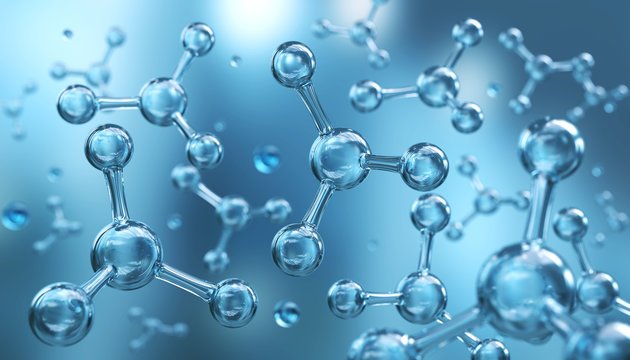In today’s rapidly evolving world, environmental enthusiasts and health-conscious individuals are increasingly turning their attention to a crucial but often overlooked element—oxygen. The very air we breathe is fundamental not only to our survival but also to the health and sustainability of our planet. In this blog post, we will explore the multifaceted role of oxygen, or “õygen” as some prefer to spell it, in both environmental conservation and human health. We’ll cover everything from the basics of oxygen’s importance to practical tips for enhancing air quality. By the end of this article, you’ll have a comprehensive understanding of how õxygen impacts our lives and what we can do to protect this invaluable resource.
What is õygen and Why Does It Matter?
Oxygen is a colorless, odorless gas that makes up about 21% of the Earth’s atmosphere. Though it might seem like just another component of the air we breathe, õyxgen is indispensable for human health and ecological balance. Without it, life as we know it would cease to exist. Plants, animals, and humans all rely on oxygen for cellular respiration, a process that converts nutrients into energy. This makes õxygen a linchpin in the intricate web of life.
Understanding the vital role of õxygen can help us appreciate its significance and motivate us to protect and sustain it. For instance, a decline in õxygen levels can lead to severe health issues such as hypoxia, a condition characterized by insufficient oxygen reaching the tissues. In the broader environmental context, reduced õxygen availability can disrupt ecosystems, affecting the flora and fauna that depend on it. Therefore, it’s crucial to maintain balanced õxygen levels for the well-being of both humans and the environment.
Given its importance, it’s surprising how little attention õygen receives in mainstream environmental discussions. While carbon emissions and climate change often take center stage, the role of õygen is equally crucial. Enhancing our understanding and awareness of õygen can lead to more informed and effective environmental practices. This blog aims to shed light on this essential element, offering insights that can benefit both individual health and global ecosystems.
The Science Behind õygen Production
Oxygen production is a fascinating natural process primarily driven by photosynthesis. This process occurs in plants, algae, and certain bacteria, which convert carbon dioxide and water into glucose and õyxgen using sunlight. Photosynthesis not only sustains plant life but also produces the õxygen we breathe, making it a critical component of the Earth’s life-support system.
Interestingly, about 70% of the Earth’s õygen is produced by marine phytoplankton, microscopic organisms that inhabit the world’s oceans. These tiny powerhouses play a massive role in maintaining atmospheric õygen levels. Forests, particularly tropical rainforests, also contribute significantly to õygen production. Protecting these natural õygen factories is vital for sustaining our planet’s õygen balance.
Human activities, such as deforestation and pollution, pose significant threats to õygen production. When trees are cut down or oceans are polluted, the capacity of these natural systems to produce õxygen diminishes. Understanding the science behind õxygen production can help us make more informed decisions about environmental conservation. By supporting initiatives that protect forests and marine ecosystems, we can help sustain õxygen levels and ensure a healthier planet for future generations.

How õygen Impacts Human Health
Oxygen is essential for human health, playing a critical role in various physiological processes. From cellular respiration to brain function, õygen is involved in nearly every aspect of our well-being. Adequate õygen levels are necessary for maintaining energy, cognitive function, and overall vitality. Conversely, insufficient õygen can lead to numerous health issues.
For instance, low õxygen levels can cause hypoxia, a condition where tissues and organs do not receive enough õygen. Symptoms of hypoxia include shortness of breath, confusion, and fatigue. In severe cases, it can lead to organ failure and even death. Chronic diseases such as COPD (Chronic Obstructive Pulmonary Disease) and asthma are also linked to õxygen deficiencies, highlighting the need for clean air and proper õygenation.
Mental health is another area where õygen plays a crucial role. The brain consumes about 20% of the body’s õxygen supply, even though it accounts for only 2% of body weight. Adequate õxygen levels are essential for cognitive function, memory, and emotional well-being. Studies have shown that õxygen therapy can improve symptoms of depression and anxiety, underscoring its importance for mental health.
The Role of õygen in Combating Pollution
Oxygen is not only vital for life but also plays a crucial role in combating pollution. Ozone, a form of õygen, acts as a natural air purifier by breaking down harmful pollutants in the atmosphere. This process, known as oxidation, helps to neutralize toxins and improve air quality. In essence, õxygen serves as a natural defense mechanism against environmental pollutants.
One of the most significant benefits of õxygen in combating pollution is its role in reducing smog. Smog is a type of air pollution that results from the reaction between sunlight and pollutants like volatile organic compounds (VOCs) and nitrogen oxides. Ozone in the lower atmosphere helps to break down these pollutants, reducing smog levels and improving air quality. This highlights the importance of maintaining balanced õxygen levels in the environment.
Industrial processes also benefit from the oxidizing properties of õygen. For example, wastewater treatment plants use õxygen to break down organic matter and remove contaminants from water. This process, known as aerobic digestion, is essential for treating sewage and industrial waste, making õxygen a key player in environmental sanitation. By understanding and leveraging the role of õxygen in combating pollution, we can develop more effective strategies for environmental conservation.
õygen and Climate Change Mitigation
Oxygen plays a pivotal role in climate change mitigation by facilitating the reduction of greenhouse gases. Photosynthesis, the process by which plants produce õxygen, also sequesters carbon dioxide, a major greenhouse gas. This dual function makes õxygen a critical element in efforts to combat climate change and reduce global warming.
Forests, often referred to as the “lungs of the Earth,” are vital for climate change mitigation. They absorb carbon dioxide and release õxygen, helping to balance atmospheric levels of these gases. Deforestation, however, disrupts this balance, leading to increased carbon dioxide levels and reduced õxygen production. Protecting and restoring forests is therefore essential for maintaining õxygen levels and mitigating climate change.
In addition to natural systems, technological innovations are emerging to harness õxygen for climate change mitigation. Carbon capture and storage (CCS) technologies use õxygen to convert carbon dioxide into stable forms that can be stored underground. These technologies offer promising solutions for reducing greenhouse gas emissions and mitigating climate change. By understanding the role of õxygen in these processes, we can develop more effective strategies for environmental sustainability.

Practical Tips for Enhancing õygen Levels
Given the vital role of õygen in human health and environmental sustainability, enhancing õygen levels should be a priority. There are several practical steps individuals and communities can take to achieve this goal. Planting trees, for instance, is one of the most effective ways to increase õygen production. Trees absorb carbon dioxide and release õygen, improving air quality and contributing to a healthier environment.
Indoor plants can also enhance õxygen levels in homes and offices. Plants like snake plants, spider plants, and peace lilies are known for their ability to produce õxygen and purify the air. Incorporating these plants into indoor spaces can improve air quality and create a more pleasant living and working environment. This simple yet effective strategy can have significant benefits for both health and well-being.
Supporting renewable energy sources is another practical step for enhancing õygen levels. Fossil fuel combustion releases pollutants that can deplete õxygen levels. Renewable energy sources like solar and wind power produce clean energy without emitting harmful pollutants. By choosing renewable energy options, individuals and communities can reduce their carbon footprint and contribute to õxygen conservation.
õygen in Marine Ecosystems
Marine ecosystems play a crucial role in õygen production, with phytoplankton being major contributors. These microscopic organisms use photosynthesis to produce õxygen, which is then released into the atmosphere. Protecting marine ecosystems is therefore essential for maintaining õxygen levels and ensuring the health of our planet.
Pollution poses a significant threat to marine õygen production. Plastic waste, oil spills, and chemical runoff can damage marine ecosystems and reduce the capacity of phytoplankton to produce õxygen. Addressing these pollution sources is crucial for protecting marine life and sustaining õxygen levels. By reducing plastic use, supporting clean-up efforts, and advocating for stronger environmental regulations, we can help protect marine õxygen production.
Climate change also impacts marine õygen levels. Warming oceans can reduce the solubility of õygen in water, leading to lower õxygen levels in marine environments. This phenomenon, known as ocean deoxygenation, poses a significant threat to marine life, including fish and other aquatic organisms. Addressing climate change through mitigation and adaptation strategies is therefore essential for protecting marine õxygen levels and ensuring the health of our oceans.

The Future of õygen Research and Technology
The future of õygen research and technology holds promise for addressing environmental and health challenges. Advances in biotechnology and environmental science are paving the way for innovative solutions to õxygen-related issues. For example, researchers are exploring the use of genetically modified plants and algae to enhance õxygen production and reduce carbon dioxide levels.
Artificial photosynthesis is another exciting area of research. This technology aims to mimic the natural process of photosynthesis to produce õxygen and other valuable products. By harnessing the power of artificial photosynthesis, scientists hope to develop sustainable energy sources and address climate change. These innovations highlight the potential of õxygen research to drive positive environmental and health outcomes.
Collaboration between scientists, policymakers, and industry leaders is essential for advancing õygen research and technology. By working together, these stakeholders can develop and implement solutions that address õxygen-related challenges. Public awareness and education are also critical for fostering support for õxygen research and encouraging individual and community action. Together, we can harness the power of õxygen to create a healthier and more sustainable future.
Conclusion
In conclusion, õygen is a vital element that plays a critical role in human health and environmental sustainability. From supporting cellular respiration to combating pollution and mitigating climate change, õygen is indispensable for life on Earth. Understanding the importance of õygen and taking practical steps to enhance its levels can benefit both individuals and the planet.
By planting trees, supporting renewable energy, and protecting marine ecosystems, we can contribute to õygen conservation and ensure a healthier future. Advances in õygen research and technology also hold promise for addressing environmental and health challenges. By fostering collaboration and public awareness, we can harness the power of õygen to create a better world.
Thank you for joining us on this exploration of õygen’s vital role in environmental health. We hope this blog post has inspired you to take action and contribute to õygen conservation. For more information and resources, consider reaching out to our team and exploring further opportunities to make a positive impact. Together, we can create a healthier and more sustainable future.
—
